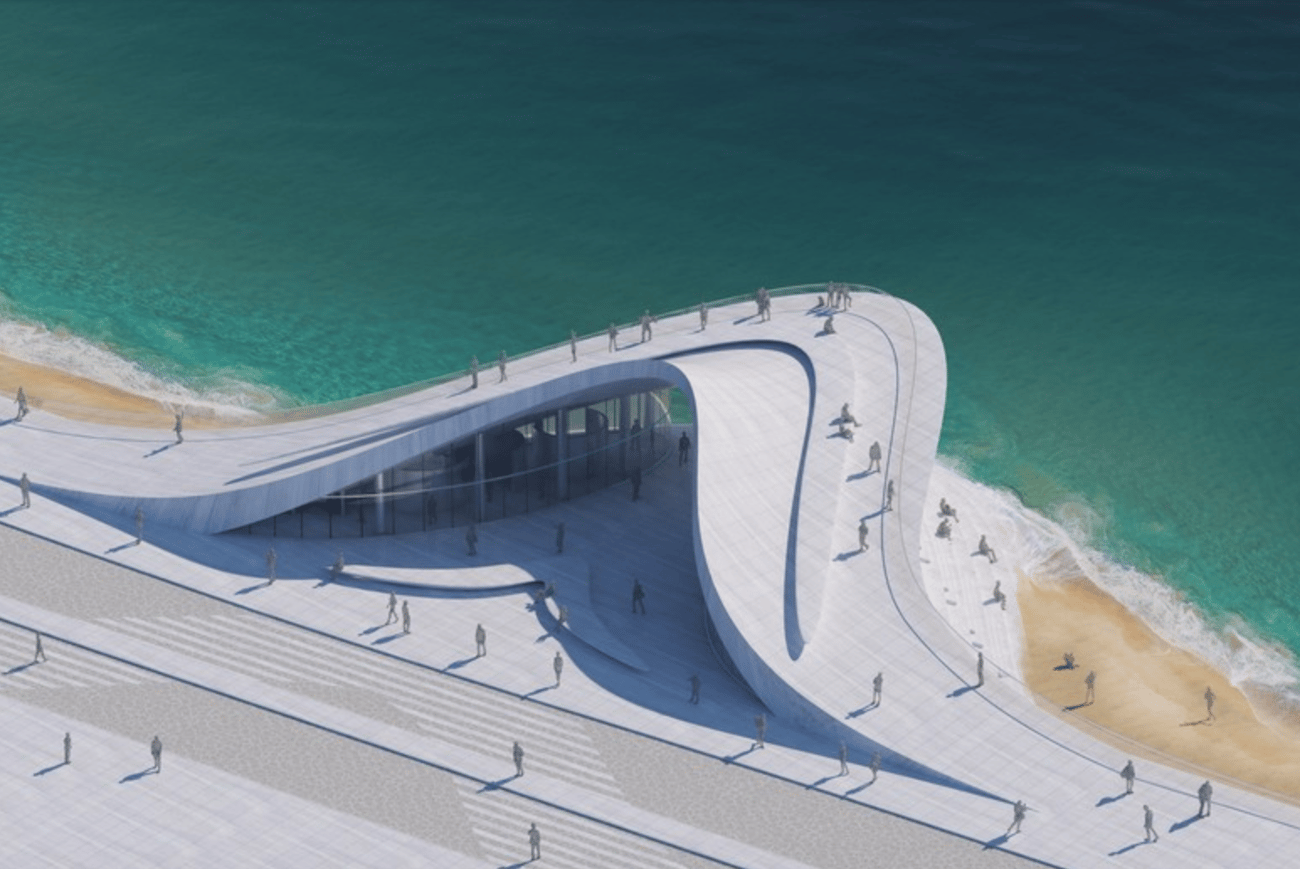Wellington’s Oriental Bay gets reimagined as curving wave in design competition

The Band Rotunda has held many lives on the waterfront over the years, from being used as changing rooms, meeting rooms, an art gallery and a restaurant, but an earthquake in 2016 showed a crack in the foundation that rendered it unusable.
Co-founders of ADEDU Dr Minh Nguygen and Dr Thu Phuong Truong decided to let this site’s bones serve as a blank canvas for designers, and asked Wellington residents and architects and designers from near and afar to reimagine what could become of the pivotal 530 square metre site.
While there was several submissions, the judges selected three winning projects – with first prize going to Wellington Wave by Stanislaw Michalowski of Studio Michalowski in Russia.


The team behind Wellington Wave described their design as: “Pedestrians freely pass through all parts of the building and may find themselves where they want: on the roof, inside, on the beach. All movement around, inside and through the building is fluid and not constrained by sharp corners and visual barriers” while judges commented: “This proposal is a bold sculptural statement based on marine life form analogy. It is one of the most practical solutions but, at the same time, it contains a high degree of innovation and novelty.”
A team hailing from a practice called Studio MPR in Argentina took second prize with their design called The Loop. It aimed to recognise the changing needs of a growing city by changing size to meet these differing requirements, while it could bring people together from different entry points.


The designers behind it described it as: “two linear docks that act as guides for a single circular volume. This floating volume, aided by a system of guides and pulleys, uses two springs to have movement. Depending on the position of the volume, different interior pools are created, perfect for aquatic and recreational activities” while the jury said: “The Loop is one of the most joyful design solution in this competition. We like the human-centred approach of the design team which pays great attention on potential activities on the waterfront.”
And in the third winning design, a Danish team – Simon Strøyer Glarborg and Jonas Swienty Andresen – entered a three-part submission called Creative Ripples that featured a park, a pavilion and a circular bridge connecting the two.


Glarborg and Andresen said, “To preserve the site as an open and public park, we propose to locate the pavilion off the coast and make the journey onto the water an important part of the experience. In the proposal, additional pavilions are shown around the bridge, suggesting that the modular system allows for additional spaces in the future.”
The jury said of the project: “This proposal maintains the importance of the Band Rotunda but extends the use into ‘blue space’, creating a complex configuration between water, building and public spaces.”
While the competition was only for ideas, rather than following through to the execution phase, the jury said it could provide inspiration for the future development of the site.
The jury was made up of University of Auckland professor Diane Brand, Victoria University Wellington professor Marc Aurel Schnabel, Prefab New Zealand CEO Pamela Bell, associate director of Aecom Harris Maragkos and president of the Oriental Bay Residents Association Andy Thomson.
An additional five special mentions were given to team’s submissions that came from Europe, South America and Asia.
More information about the winning designs can be viewed on the ADEDU Facebook page.




